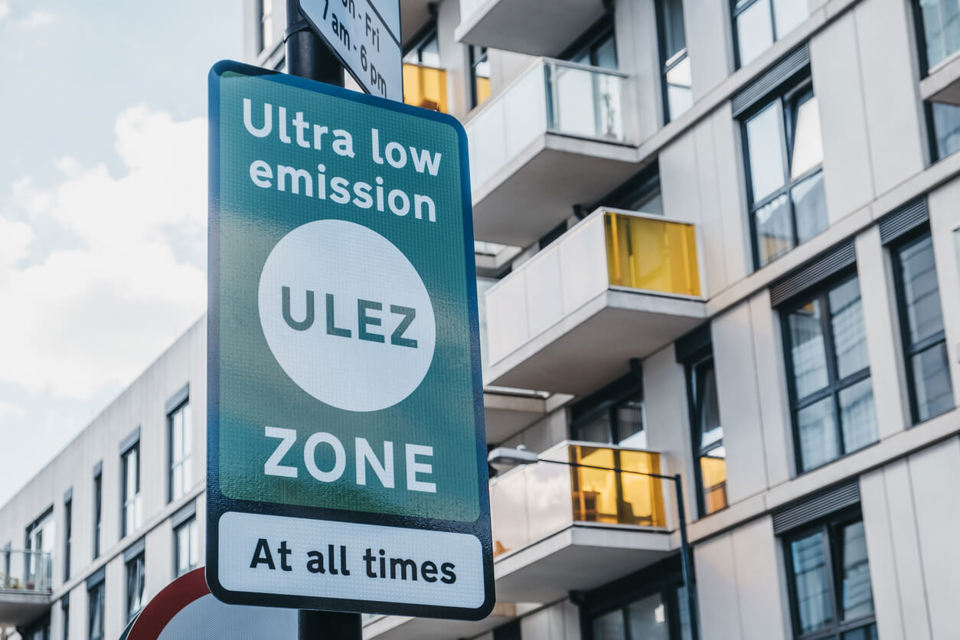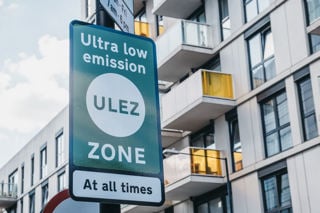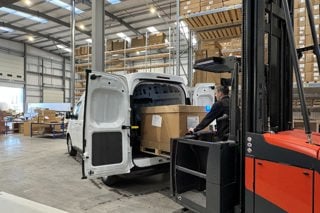One year on from the expansion of London’s ultra-low emission zone (ULEZ), analysis by the RAC suggests drivers of non-compliant vehicles paid almost £100 million to Transport for London (TfL).
The ULEZ, which used to cover the same area of the congestion charge in central London, was expanded up to, but not including, the North Circular Road (A406) and South Circular Road (A205), in October, last year.
It was 18 times larger than the original central London ULEZ.
RAC analysis of TfL figures reveals the move has generated an estimated £93.6m of additional revenue from drivers of non-compliant vehicles having to pay £12.50 a day.
Since the beginning of November 2021 until June 2022 – a period of eight months – an average of 1.9m journeys were made into the ULEZ every month by vehicles not conforming to either Euro 6 diesel standards or Euro 4 petrol standards, resulting in £112.5m worth of revenue.
Prior to the ULEZ expansion, 329,527 journeys on average were made every month by non-compliant vehicles within the original central London boundaries, resulting in revenues of just under £19m.
The value of the expanded zone to TfL will be higher still, however, as these figures do not include TfL revenues for penalty charge notices (PCNs) issued to drivers for non-payment of the ULEZ charge.
Data shows that in the first eight months since the expansion, an estimated 1.6 million PCNs have been issued, compared to just 253,357 in the eight months prior to the boundary changes.
Given the £160 fine amount (£80 for early payment), the RAC estimates the potential income from PCNs issued to drivers in the expanded zone is between £130.9m and £261.9m, compared to between £20.3m to £40.5m in the eight months in the original central London boundaries.
Figures released last year by the Ministry of Housing, Communities and Local Government, showed that, when the ULEZ was introduced in 2019, it helped City Hall rake in an extra £107 million in the first year it was in place.
Prior to expansion, the RAC says that around 13.1% of all vehicles were deemed non-compliant with emission standards. After expansion, this fell to 6.9%.
The proportion of non-compliant vehicles issued with a PCN averaged 9.6% within the original zone, rising to 14.2% in the first two months of the expanded zone before falling back to the same average proportions that were prevalent in the old zone.
It should be noted that around three-in-10 (28.5%) non-compliant vehicles were not required to pay the ULEZ.
RAC head of roads policy Nicholas Lyes said: “The expansion of the ultra-low emission zone in 2021 meant a far larger geographical area was covered by the mayor’s strict vehicle emissions standards.
“For many, this meant a very stark choice: either replace their vehicle with a compliant model or face paying the £12.50 daily charge. Failing to pay the charge wasn’t an option either as it would result in a hefty penalty charge notice.”
Lyes added: “The expansion of the ULEZ has resulted in a much-increased revenue stream for Transport for London, notwithstanding the costs associated with introducing the larger ULEZ.
“Londoners living outside the current ULEZ will now be worrying about the prospect of further expansion, mooted to be at the end of August 2023.”
TfL launched a consultation earlier this year on plans to expand the ULEZ to cover almost the whole of the capital from August 29, 2023.
If a larger zone was introduced, TfL estimates that the number of cars not meeting the tough ULEZ standards each day in outer London would fall from 160,000 to 46,000 and the number of vans from 42,000 to 26,000.
The Mayor of London, Sadiq Khan, is due to receive a report from TfL on the consultation’s findings next month. He will then decide whether to press ahead with plans to expand the ULEZ across all 33 boroughs.
Lyes said: “While we accept that action is needed to reduce toxic emissions from vehicles, the cost-of-living crisis is hurting drivers in the pocket and there is a risk that further enlarging the zone will be hugely costly for those with older vehicles who can least afford to change them for something newer.
“As it is, RAC research suggests drivers are holding on to their vehicles for longer, so there is a real risk that more people with non-compliant vehicles will be forced to pay a charge they can ill afford to.
“We would encourage the mayor to take a pragmatic approach and redouble his efforts to support lower-income families and businesses with non-compliant vehicles with a targeted scrappage scheme ahead of any expansion plans.”




















Login to comment
Comments
No comments have been made yet.